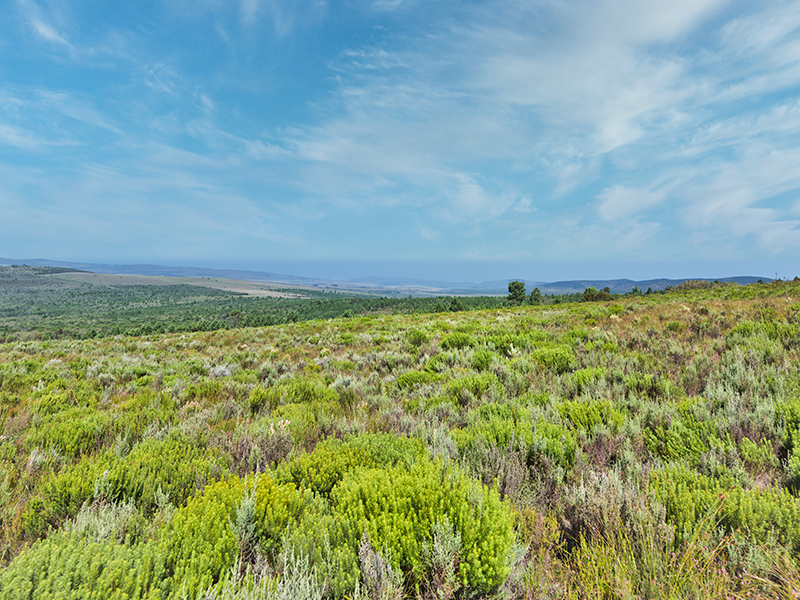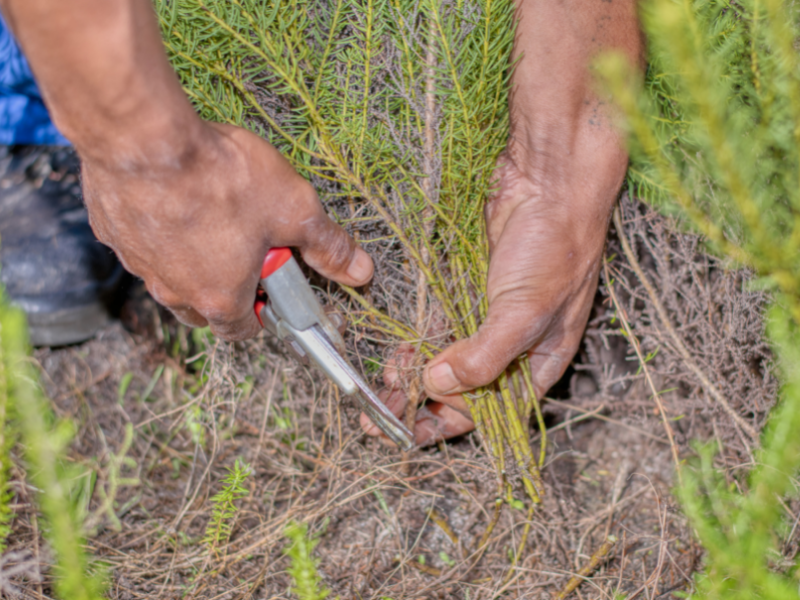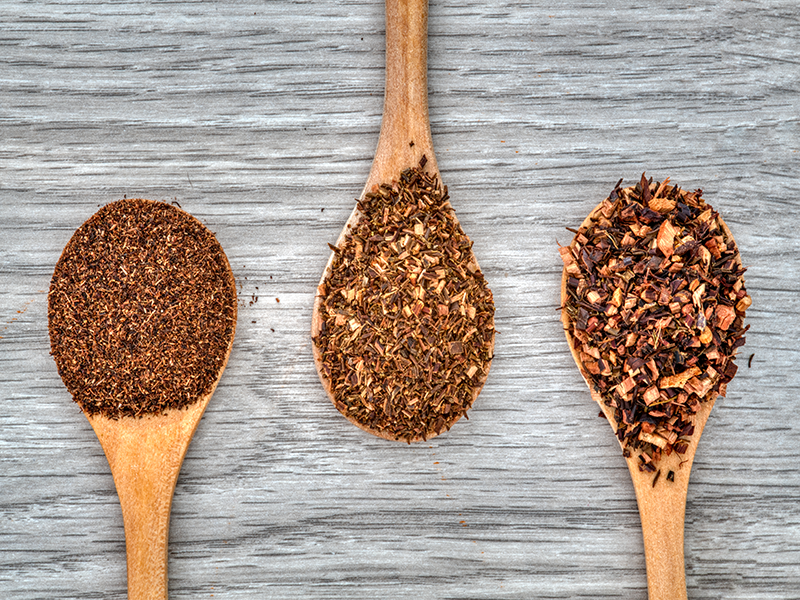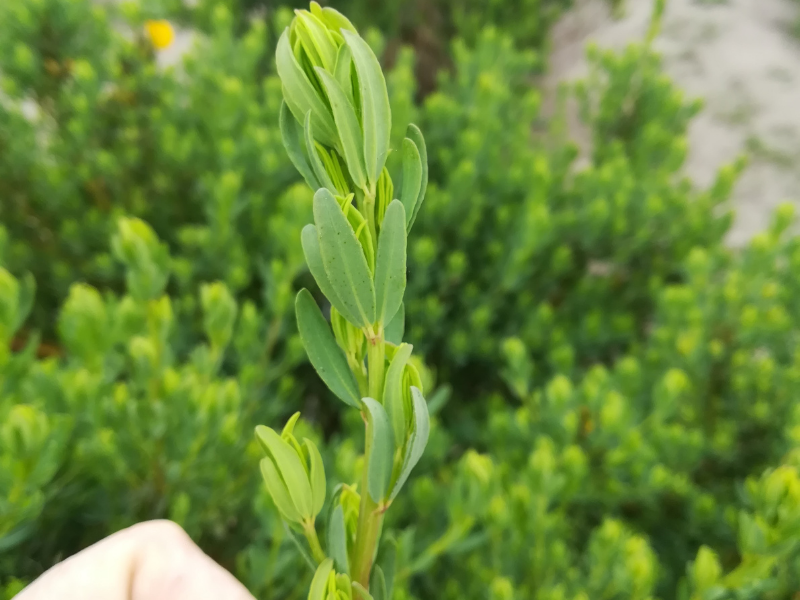Sustainable growing is the nectar of life for honeybush tea
July 18, 2022 - Adityarup "Rup" Chakravorty
Considered to be the most widely consumed drink in the world, tea comes in many varieties. One of these includes honeybush tea, which is made from the leaves of the honeybush plant. It has a honey-like flavor and aroma. Although it is a less well-known variety than its more famous cousin – rooibos – honeybush tea is naturally low in sugar, caffeine-free, and has several other potential health benefits.

One of the reasons honeybush tea isn’t as widely grown and consumed is the lack of research on this crop. Pippa Karsen, a researcher at Department of Agriculture, Western Cape Government and a doctoral candidate at Stellenbosch University in South Africa, is the lead author of a new study that provides a comprehensive review of what is currently known about honeybush cultivation and breeding. The study was published in Crop Science, a publication of the Crop Science Society of America.
The research identifies management strategies for sustainable harvesting of honeybush. It also examines potential risks of introducing improved plant material into the honeybush’s natural habitat.
Honeybush tea is harvested from plants native in an area of natural shrubland vegetation located in the Western Cape and Eastern Cape provinces of South Africa. As the popularity of honeybush tea grows, wild harvesting is becoming less sustainable. Currently, about 80% of honeybush is harvested from the wild. That puts a tremendous amount of pressure on wild honeybush plants.

“Wild harvesting can threaten natural strands of honeybush,” says Karsen. That’s especially true for honeybush varieties that are slow growing. In fact, all commercially produced honeybush species are currently listed on the International Union for Conservation of Nature’s Red List of Threatened Species. “For the continued growth of the honeybush industry, we need to shift away from wild harvesting,” says Karsen. “Instead, we need to effectively manage cultivated plantations.”
There is a clear need to switch from harvesting wild honeybush to cultivation. But it hasn’t been easy to produce consistently high-quality tea from cultivated honeybush. Part of the reason is an opposing relationship between honeybush yield and quality.
Tea quality is partly defined by its taste and "mouthfeel." These features of tea are influenced by the concentration of chemicals called phenols, which are found in the tea leaves. Honeybush tea contains several phenolic compounds, some of which contribute to its health benefits. “Increased yield in honeybush has a direct impact on the tea’s characteristics,” says Karsen. “In turn, this affects tea quality as well.” Increasing yields from honeybush plants can negatively affect how the tea tastes.

To overcome the yield versus quality issue, growers need superior genetic material, says Karsen. “We also need to implement the best cultivation practices.” However, this can get tricky. There are several varieties of honeybush, and the varieties have adapted to the occurrence of fire in their environment.
Some species – called ‘reseeders’ – are killed by fire. Yet, their seeds need fire to germinate, and so the species regenerates by the seeds that survive. Other honeybush species – called ‘resprouters’ – are able to reproduce through seeds or regenerate from underground ‘lignotubers’. Lignotuber is a woody swelling of the root crown possessed by some plants as a protection against destruction of the plant stem, such as by fire.
About 85% of wild honeybush harvested is from a species with the scientific name Cyclopia intermedia. This species of honeybush is a resprouter, able to regenerate after a fire. Yet, information on suitable propagation methods for resprouters has remained elusive, says Karsen and the research team. This remains an area of active study.

Ultimately, the goal is to improve yield and profitability for honeybush growers without compromising tea quality. Karsen and colleagues are now researching irrigation and organic fertilization practices that can boost honeybush production in sustainable ways. “We believe honeybush can reach the height of the rooibos industry,” says Karsen. “The hope is that it becomes a household name in tea-drinking nations.”
This research was supported in part by Stellenbosch University, Western Cape Government, Department of Agriculture, South African Honeybush Tea Association, Agulhas tea, and Dr. Lynn Hoffmann.
